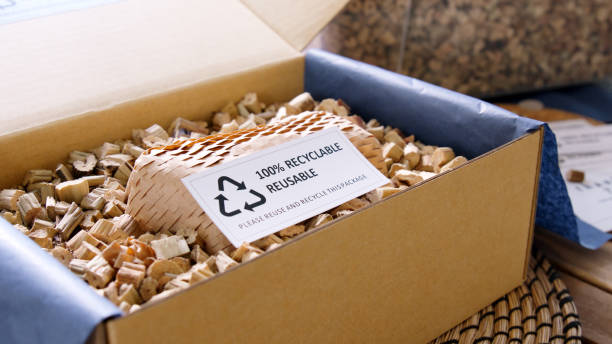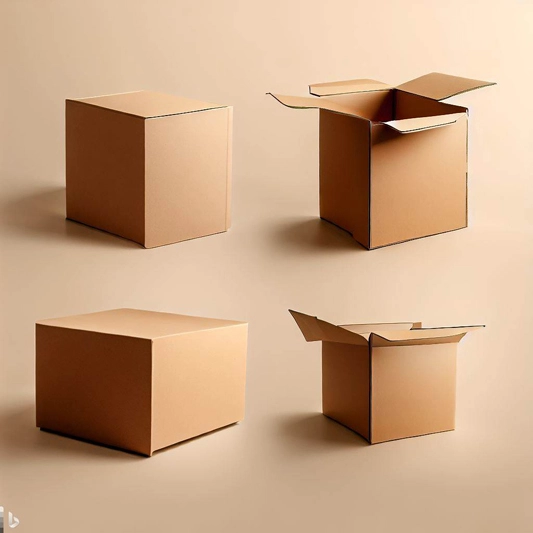Gaylord Boxes : Top 4 Best Options for Heavy-Duty Packaging
Gaylord boxes are becoming invaluable tools within the bulk shipping and storage arenas of various industries. These are huge, heavy-duty containers designed for high-volume handling of materials, thereby playing a significant role in the logistics and storage systems of such industries. The article seeks to explain Gaylord boxes in detail-there definition, types, sizes, and other applications.
What Is a Gaylord Box?
Gaylord boxes, or sometimes referred to as bulk boxes or bulk bins, are large containers that occupy a space equal to that of a pallet, and are mainly for storing goods in large quantities and shipping. The word “Gaylord” thereby derives from Gaylord Container Company, one of the first manufacturers of these really giant corrugated containers.
Gaylord boxes, which indeed are meant to be built with somewhat corrugated cardboard and constructed to be very sturdy and able to carry significant weight, are preferred among the following industries: manufacturing, recycling, agriculture, and retail. Large volumes of materials can be handled easily with well-constructed Gaylord boxes.
Types of Gaylord Boxes
Gaylord boxes come in different types, each manufactured for specific applications and material-handling expectations. These variations must be understood in selecting the right container for a given application.
1. Cardboard Gaylord Boxes
The most popular Gaylord cardboard box is again made of corrugated cardboard; it is preferred for the low cost, recyclability, and suitable strength for various bulk storage and shipping requirements. They come in various wall thicknesses, most between double-wall and triple-wall construction, to satisfy different weight capacities.

2. Plastic Gaylord Boxes
These containers are plastic pallets, or in more technical parlance, plastic bulk containers. They don’t mean to be impressive, but they do boast a certain architectural significance. They come in handy for the storage and movement of flowable materials such as resins and powders, granulated materials and liquids, and even semi-liquids. Being manufactured out of FDA-approved food-grade polymers, the weight capacity of these containers is up to 3300 lbs but engineered to withstand pressures that are beyond that of other bulk containers.

3. Corrugated Gaylord Boxes
The term corrugated Gaylord boxes is mostly used for the type of material used: corrugated fiberboard. These boxes are manufactured for maximum efficiency and have durability features, telescoping designs, and triple-wall cardboard construction. They are often used for displays, so they are perfect for grocery stores or businesses that display large quantities of products.

4. Gaylord Archival Boxes
The pallet archival boxes are designed to preserve documents, photographs, and other archival materials. Most often acid-free, these boxes are constructed to protect their contents from all the environmental forces for which these materials will be digitally archived, not for transport, but for dear life organization in libraries, museums, and archival institutions.
Common Sizes and Specifications
Choosing the right size and specification of the Gaylord box is necessary to have optimal space utilization with safe transportation of materials. The following are some standard sizes along with some of their usual utilizations:
1. Standard Gaylord Size: 48″ x 40″ x 36″
At its three feet by forty inches by forty-eight inches, this has become the typical size Gaylord box.Most often these boxes are rectangular or octagonal with 3-5 walls. They are the most popular so that when palletized correctly, from 500-550 boxes will fit on a single trailer. With a 4-5 wall configuration, this size box will have a weight range between 4,000 and 5,000 lbs.
2. Pallet Container: 40″ x 40″ x 40″
When we compare the weight and volume, the weight and the volume of these boxes look much like the weight and the volume of 48″ x 40″ x 36″ Gaylord boxes.
The size is thus aptly procured in measurement note 40 inches on all sides. They are excellent for internal logistics and transportation. The remarkable advantage is their stacking capabilities on both 40″ x 40″ and 48″ x 40″ pallets. This versatility enables holding capabilities of 3,000 lbs in the four- and five-wall configurations, placing them on the most sought-after list for many.
3. Smaller Sizes: 40″ x 30″ x 30″ and 36″ x 36″ x 36″
One advantage is that, due to their application with standard 40″ x 48″ pallets, they are even stack able together. However, these boxes do vary somewhat in their interior wall number (2-5) and shape (most are rectangular, but some are octagonal). Their weight capacity varies with all these factors, but generally, such boxes are not designed to be heavy load bearers with respect to the standard Gaylord box 48″ x 40″ x 36″ size. A typical box of this type, 40″ x 30″ x 30″, with four walls usually holds around 1,200-1,500 lbs.
Applications of Gaylord Boxes
The pallet box is considered to be a versatile form due to the different applications they have in so many industries. Some common exposures include:
1. Manufacturing and Industrial Use
Pallet boxes have a great role in manufacturing industries because they are responsible for storing and transporting raw materials, components, and even finished products. Their capacity is considerable and also very strong and durable, making them very practical for bulk handling, which means a much smaller number of containers used for that purpose and consequently much more effortless logistics.
2. Recycling and Waste Management
Pallet boxes are generally utilized during recycling operations to gather and carry materials like plastics, metals, and papers. Because they have a high holding capacity and bear heavy weights, pallet boxes are good parameters for the efficient management of recyclable materials.

